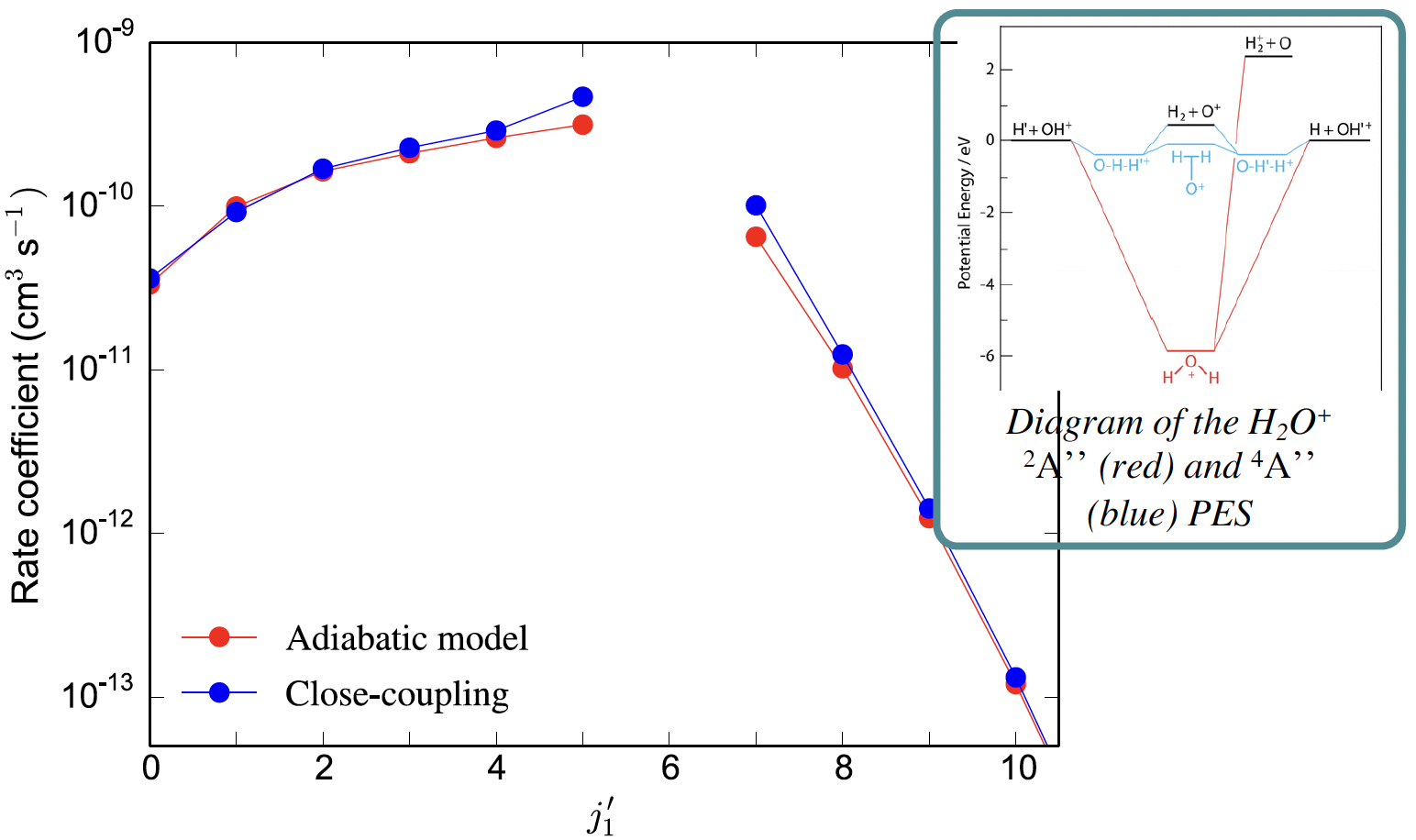by François Lique & Paul Pirlot Jankowiak, on
Presentation of the workshop

From July 4th to 5th 2024, the SCAPAPS Workshop Meeting was taking place in Toruń (Poland), at the Institute of Physics Nicolaus Copernicus University. It was organized in the framework of the COSY COST action CA21101.
This platform offers a unique space for collaboration, knowledge exchange, and discussions on cutting-edge research in these vital areas. We especially welcome early-career scientists—PhD students, junior faculty, and postdocs—to participate. It’s a fantastic chance for rising scholars to connect with top experts, explore fresh perspectives, and play a part in shaping the future of astrochemistry and astrobiology.
During this workshop F. Lique presented his work as an invited speaker. P. Pirlot Jankowiak also presented his thesis work in an oral communication.
The excitation and chemistry of interstellar ions - F. Lique
Accurate determination of physical conditions of interstellar molecular clouds is a crucial step to better understand the life cycle of the interstellar matter and particularly the formation of stars and planets as well as the synthesis of organic molecules that may lead to emergence of life in the universe.
A key parameter for the determination of these conditions from interstellar spectra is the calculation of accurate collisional excitation rate coefficients of interstellar molecules with the most abundant species (H, He, H2 and e-). Whereas the knowledge of collisional processes has reached a certain level of maturity for collisions involving neutral molecules, very few reliable data exist for collisions involving ions. In this presentation, we will introduce the most recent developments that were done in the field of molecular scattering in order to overcome this complex problem and to provide collisional data for these ions in order to derive as much information as possible from the molecular spectra collected by current telescopes. We will also show that the new data can be efficiently used in radiative transfer models in order to derive the abundances of ions with unprecedented accuracy.
The study of reactive collisions, despite crucial for modelling interstellar chemistry, is also a theoretical challenge. While the empirical determination of reaction rate constants is accessible, the study of (quantum) reactive collisions leading to the state-to-state resolution remains complex. I will then show how theoreticians and experimentalists can collaborate in order to study chemical reaction of astrophysical interest and to provide modellers the necessary information to fully exploit the observations.

Collisional excitation of OH+ by molecular hydrogen: Toward modeling reactive systems in cold ISM - P. Pirlot Jankowiak, and F. Lique

The modeling and interpretation of molecular spectra from interstellar environments require the knowledge of both radiative and collisional processes of energy transfer between chemical species. Accurate state-to-state rate coefficients of interstellar molecules in collision with the main collisional partners H2, H and He are then necessary [1].
The OH+ radical is key specie in the oxygen chemistry of dark molecular clouds and is an important tracer of the cosmic-ray ionization rate [2]. However, this molecule is very reactive especially by collisions with H2. Theoretical studies about collisional excitation in reactive systems is still a topic of ongoing exploration. Especially for exothermic and barrier-less reactions, a competition between reactivity and collisional excitation can exist at low temperatures; and the inclusion of inelastic and reactive channels must be considered in scattering calculations. In this context, it becomes necessary to develop new approaches to treat non-reactive and reactive processes to quantify state-to-state molecular collisions for low temperatures. We use the Statisticial Adiabatic Channel Model (SACM) [3] to overcome this challenge; and present the first data for OH+-H2 collisions.
Références
[1] Roueff and F. Lique, Chem. Rev. 113, 8906 (2013)
[2] N. Indriolo, D. A. Neufeld, M. Gerin, et al., ApJ, vol. 800, no. 40, 2015
[3] Loreau, Lique & Faure, 2018 ApJL 853 L5